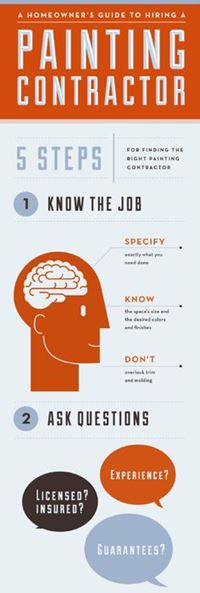Vital Seasonal Aspects Of Commercial Exterior Paint: What You Need To Recognize
Vital Seasonal Aspects Of Commercial Exterior Paint: What You Need To Recognize
Blog Article
Short Article Created By-Carlson Chaney
When you're planning a commercial external painting job, seasonal variables can make or damage your outcomes. You'll wish to take into consideration how temperature level and humidity impact paint application and drying out times. Choosing the best season can ensure your paint adheres effectively and lasts longer. Yet which periods are truly the very best for this type of work? Allow's explore the crucial elements that can affect your project's success.
The Impact of Temperature on Paint Application
When you're preparing a commercial external paint job, the temperature can considerably impact how well the paint adheres and dries.
Preferably, you intend to repaint when temperatures vary in between 50 ° F and 85 ° F. If it's as well cold, the paint may not heal appropriately, causing issues like peeling off or cracking.
On the other side, if it's too warm, the paint can dry as well promptly, stopping correct adhesion and leading to an uneven finish.
You must also take into consideration the moment of day; morning or late afternoon uses cooler temperature levels, which can be more desirable.
Constantly inspect the maker's suggestions for the particular paint you're utilizing, as they often offer assistance on the excellent temperature level array for optimal results.
Humidity and Its Effect on Drying Times
Temperature level isn't the only ecological aspect that influences your business external paint project; moisture plays a significant duty also. High moisture levels can slow down drying out times significantly, impacting the general high quality of your paint task.
When the air is saturated with wetness, the paint takes longer to heal, which can bring about problems like bad adhesion and a greater threat of mold growth. If you're repainting on a specifically moist day, be planned for prolonged delay times in between coats.
It's crucial to keep an eye on local weather and strategy accordingly. Preferably, go for moisture levels in between 40% and 70% for ideal drying.
Keeping mn interior paint color expert in mind ensures your job remains on track and provides an enduring surface.
Best Seasons for Commercial Outside Paint Projects
What's the very best time of year for your industrial exterior paint jobs?
https://www.glamour.com/story/how-to-paint-your-nails-manicurist-advice and very early loss are generally your best options. Throughout these seasons, temperatures are light, and moisture degrees are often lower, producing suitable problems for paint application and drying out.
Avoid summertime's intense heat, which can cause paint to dry also rapidly, causing poor adhesion and finish. Likewise, winter months's cool temperature levels can impede appropriate drying out and treating, running the risk of the long life of your paint work.
Aim for days with temperature levels in between 50 ° F and 85 ° F for optimal results. Bear in mind to inspect the regional weather report for rainfall, as damp conditions can wreck your project.
Preparation around these aspects guarantees your paint project runs smoothly and lasts longer.
Conclusion
Finally, planning your industrial exterior painting jobs around seasonal factors to consider can make a significant difference in the result. By organizing job throughout the excellent temperatures and moisture degrees, you'll guarantee far better bond and drying out times. Keep in mind to keep an eye on local weather report and select the correct time of year-- spring and early fall are your best options. Taking these actions will certainly aid you accomplish a durable and professional surface that lasts.
